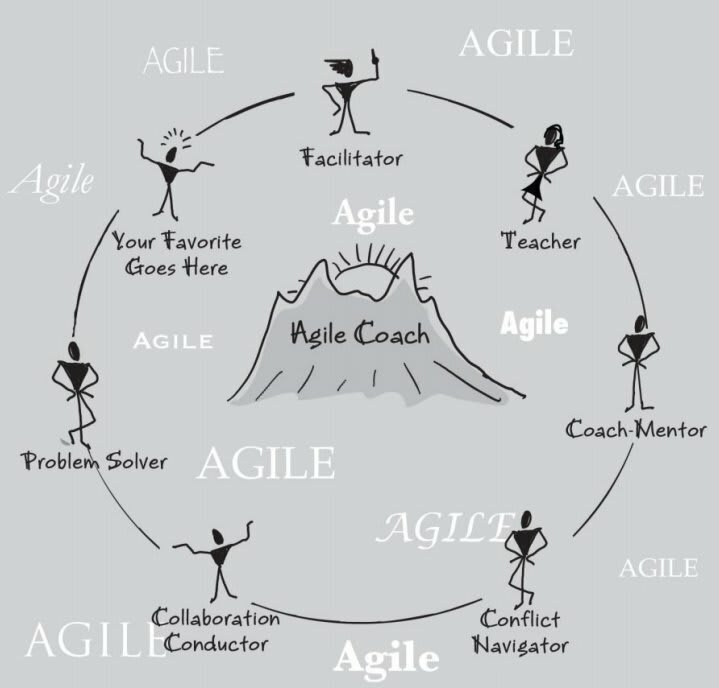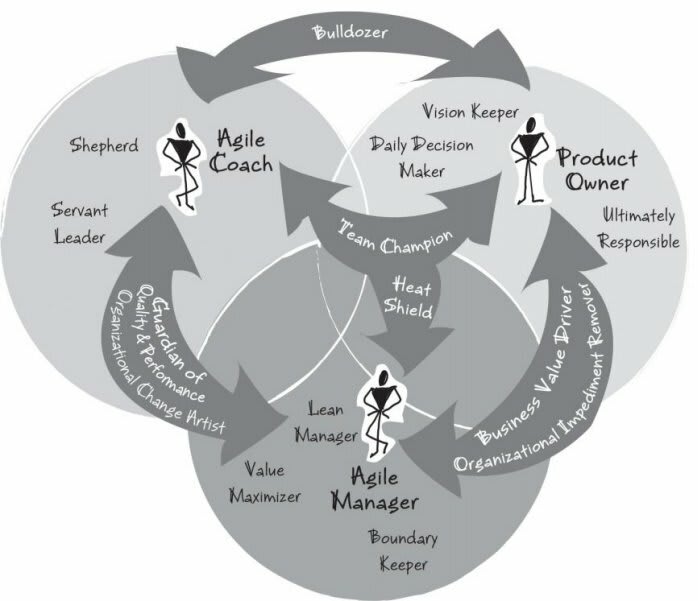23
DEV3L on Coaching Agile Teams
The term Agile Coach has been used to describe a myriad of roles within the Software Development space - anywhere from a Scrum Master, Project Manager, to an agile curious Technical Lead. Coaching Agile Teams: A Companion for ScrumMasters, Agile Coaches, and Project Managers in Transition by Lyssa Adkins is the definitive book on what truly makes an Agile Coach.

Coaching a full-time job for agile coach, and part-time job for all leaders
Constantly need to reawaken and refocus
Take it to the team
Agile exposes the dirt - sunlight is the best disinfectant
40% Doing, 60% Being - a agile coach models agile all the time!
Time and budget remain constant, only scope is flexible
Native Wiring:
Find your voiceJourney to Coach

Quest for high performance moves away from the hamster wheel - autonomy, mastery, purpose #drive
High performance is a journey towards something better - next right thing
Lead by believingHigh Performance Tree, roots as values - team kick off technique

Coaching starts with you, but it's not about you
When you coach,
bring yourselfStart with self, identify growing edge

Identify Conflict Resolution Style
Use Nonviolent Communication - for leaders there is no such thing as a trivial comment
Practice your Servant Leadership
Grow your Emotional Intelligence
Master yourself in the moment
Master higher levels of listening
Shu-Ha-Ri

The student is the teacher, the teacher is the student
Agile Coach Styles:

Achievements:
Coach team at beginning and end, then individuals in the middle
Be present, coach out loud as
Tone: loving, compassionate, uncompromising
Meet them half step ahead of where they are - one on one agile coaching
Guarantee safety - Psychological Safety as a Prerequisite #modernagile
Open with observation or invitation
Coach creates container, team creates content
Their meeting, not mine - focus, wander, attentionSelf-sufficiency is the goal
Help them see
Stand up - commitment and coordination
Sprint planning - know work, fresh start, shared goals, focus
Sprint review - true up, show and tell, feedback, ask for help
Retrospective - inspect and adapt, how, do better

Learn about process, team, and work - GO
Understand teams current agile aptitude, then reinforced core competencies
Break ice for the team, but don't spend all day - more success task orienting team over relationships
Create a Shared Vision that engages on multiple levels - individual, team, company

Create team norms, aka Working Agreements - values, social, logistics, and conflict resolution
Work ahead - envision, backlog, get going
Constantly teach agile roles - PO, Manager, Coach

Do not inflict help on team - let them learn to solve own problems - empower
Doing something for someone else, is doing something too someone elseIt's the team's commitment - take the problem to the team
Don't go looking for problems, address them as they arise
Rubric:
Problem Levels:
Run health checks - Agile Team Dynamics
When problems arise, get some space - sleep on it - reaffirm agile process that can solve
Reveal the system to itself #orsc
System is organic, not mechanisticEscalation Path Conflict Model

Teams often can self navigate up to level three - self organization
Response modes:
Don't carry complaints for team, have individuals address other party directly when possible
Intervention Steps:
- dry run?
- when/where
- dry run?
No anonymous complaintsBoost positivity to negativity ratio - at least three good to bad
Cooperation or Collaboration
- emergence
- smooth transitions
Collaboration built upon cooperation
Collaboration Behaviors:
Human beings first, then work mates
Make sure all voices heardWhen muscle is built, go conductorless
Failure Modes:
Recover - replace fear with trust
Success Modes:
Practice, awareness, next right thing
No finish line, keep learning and integrating skills
Skills:
Measure self as leader, not manager
Only you know when you have arrived